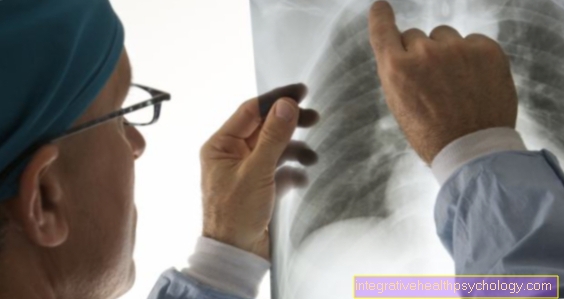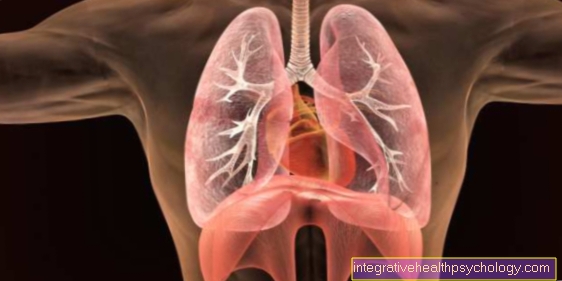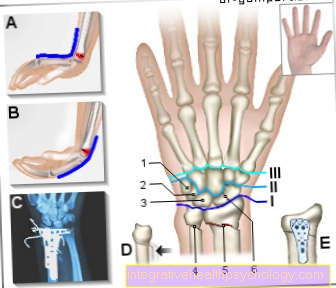Vena cava
synonym
Vena cava
English: caval vein
introduction
In German usage the vena cava refers to the two largest veins in the human body. They collect the venous, deoxygenated blood from the body periphery and direct it back to the heart. From there it goes back to the lungs, where it is enriched with oxygen before it is pumped back into the body's circulation.

What is a vena cava?
A vena cava distinguishes an upper vena cava from a lower vena cava.
Superior vena cava
The superior vena cava (lat. Superior vena cava) transports the venous blood from the upper half of the body, i.e. above the diaphragm: head and neck area, both upper extremities. It arises from the union of the two brachiocephalic veins and is about five centimeters long.
Behind the right edge of the breastbone (sternum) and to the right of the ascending part of the aorta (Pars ascendens aortae) it runs to the heart. There it flows into the right atrium at the level of the third costal cartilage. Before it enters the pericardium, it receives an inflow through the azygos vein.
Lower vena cava
The inferior vena cava (lat.Vena cava inferior) directs the blood from the lower half of the body back to the heart. It arises from the confluence of the right and left common iliac veins at the level of the fourth to fifth lumbar vertebrae. Right, along the abdominal aorta, the Pars abdominalis aortae, pulls it up in front of the spine. Through an opening in the diaphragm, the Foramen venae cavae, it passes into the chest cavity, where it also opens into the right atrium one to two centimeters above it. On its way it receives many important inflows from the paired abdominal organs, that is, from the
- Kidneys
- Adrenal glands
- Testicles or ovaries





























